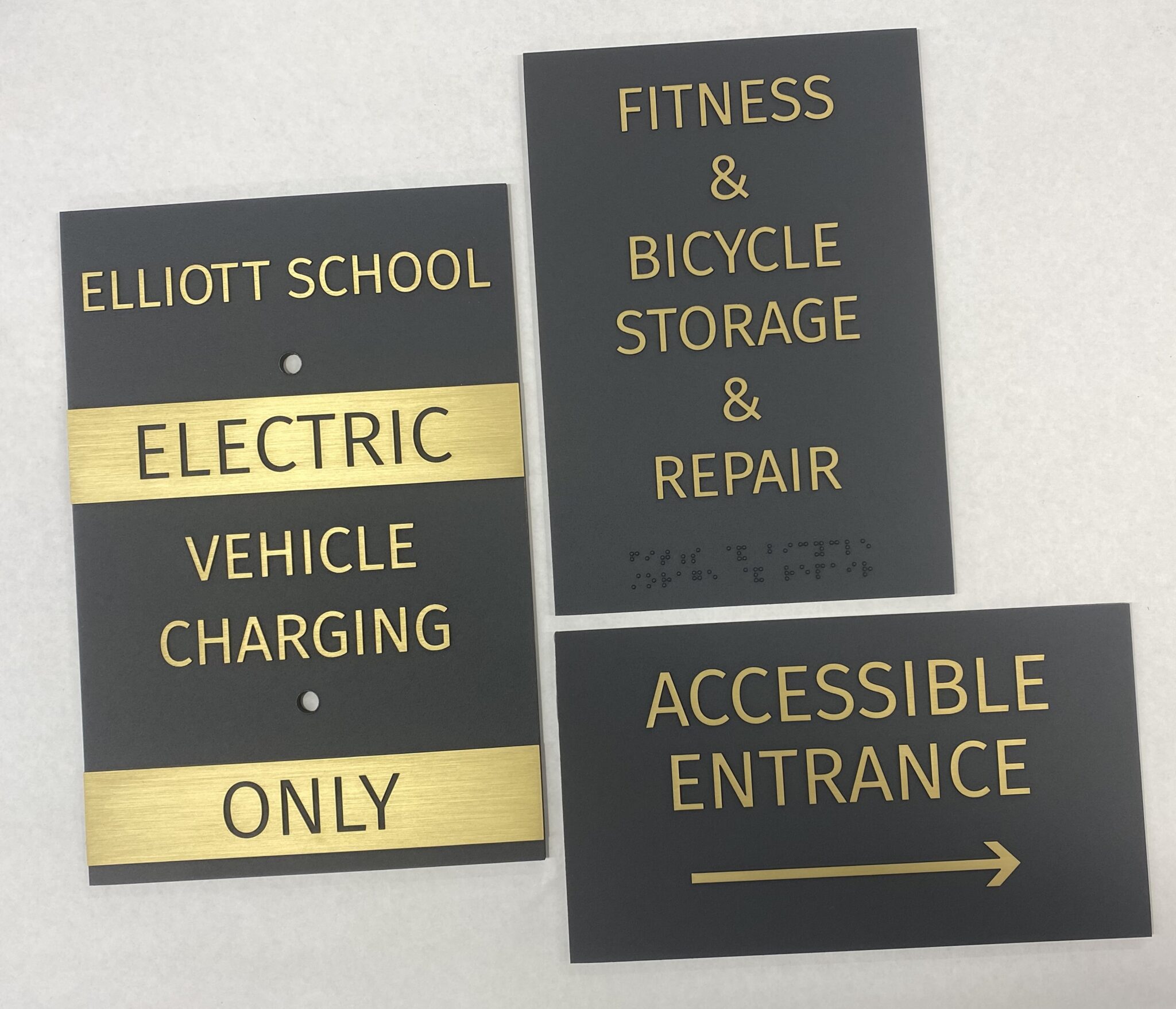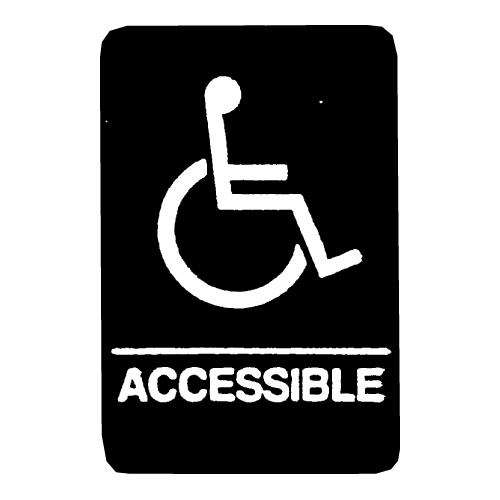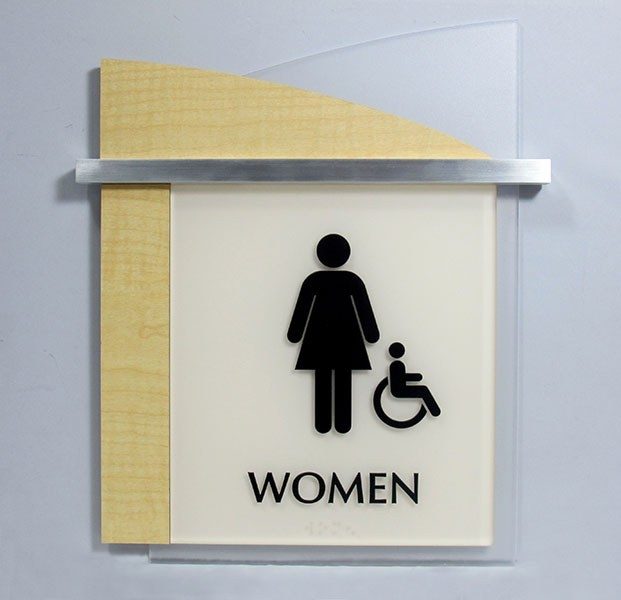Recognizing the Significance of ADA Signs for Inclusive Environments
In an increasingly diverse society, the importance of ADA signage can not be overemphasized. By incorporating attributes like tactile characters and high-contrast visuals, ADA signage plays a critical function in making sure equivalent access for people with disabilities.
The Function of ADA Signs
ADA signage plays a critical function in guaranteeing access and inclusivity in public and personal spaces. These signs are vital in directing individuals with impairments, offering them with the necessary information to browse settings individually and safely. The Americans with Disabilities Act (ADA) states specific guidelines for signs to guarantee that individuals with visual, acoustic, or cognitive problems can access the exact same information as those without such challenges.
The duty of ADA signs prolongs past plain conformity with legal requirements; it personifies a dedication to equality and non-discrimination. By implementing ADA-compliant indicators, institutions and organizations demonstrate their dedication to developing atmospheres where everyone, no matter their physical capabilities, can participate completely and equally. This is specifically vital in spaces like hospitals, instructional organizations, and federal government buildings, where accessibility can directly affect an individual's health and capability to access crucial services.
In addition, ADA signage adds to the general customer experience by minimizing confusion and enhancing wayfinding for all people. Clear, strategically put signs assists in taking care of foot web traffic, reducing congestion, and boosting safety. Fundamentally, ADA signs is a cornerstone of comprehensive layout, helping with a setting where all people can interact and browse with their surroundings successfully.
Key Parts of ADA Signs
Reliable communication is at the heart of ADA signs, which incorporates numerous key components to make sure access for individuals with impairments. Among the key components is the usage of responsive characters, such as Braille and elevated letters, which allow individuals with visual disabilities to review the indicators with touch. The Braille should be Quality 2 and placed directly listed below the equivalent message.

One more essential element is the placing place and height of the indications. ADA laws define that indicators have to be set up at a height that comes to all customers, commonly in between 48 and 60 inches from the flooring. This makes sure that they are accessible for individuals in wheelchairs or of varying heights.
Benefits for Organizations and individuals
While making certain ease of access via ADA signage is a legal need, it likewise supplies significant advantages for both people and companies. For individuals, specifically those with disabilities, ADA signs offers critical ease of access to public rooms.
For businesses, the application of ADA signs can bring about improved client contentment and loyalty. By showing a dedication to accessibility, organizations can attract a broader client base, consisting of people with handicaps and their families, that usually choose inclusive atmospheres. Furthermore, ADA conformity can secure organizations from possible legal challenges and charges connected with non-compliance, securing their online reputation and economic security.
In addition, ADA signs can add to a favorable office atmosphere. Workers with specials needs profit from easily accessible navigating within their offices, advertising efficiency and morale (ADA Signs). Ultimately, purchasing ADA signage not only satisfies legal obligations yet additionally boosts the inclusivity, online reputation, and functional success of services
Typical Types of ADA Signage
When going over the different forms of ADA signs, it is necessary to understand the particular types that provide to different accessibility needs. ADA signage is developed to make sure that people with impairments can browse areas securely and separately.
One more considerable sort of ADA signs is directional signs. These offer clear support to different locations within a center, making certain that all individuals, consisting of those with flexibility problems, can quickly discover their way - ADA Signs. They typically include icons and high-contrast colors to boost visibility and comprehension
Informational indicators are additionally essential, supplying important information regarding facilities, such as operating hours and plan standards. On top of that, regulative indications communicate mandatory directions, like "No Smoking cigarettes" or "Departure Course," guaranteeing compliance with safety methods.
Finally, recognition signs are made use of to identify areas and spaces, making it easier for everybody, no matter of capacity, to identify details locations. These indications frequently consist of pictograms to enhance universal understanding. Jointly, these usual sorts of ADA signage play an essential duty in producing comprehensive and available settings.

Applying Effective Signage Solutions
Carrying out efficient signage options requires a strategic technique to guarantee check that ease of access and conformity with the ADA requirements. The procedure begins with a comprehensive evaluation of the facility to determine the particular signs requires based on the environment's feature, design, and the population it offers. This evaluation should include considerations for both permanent and temporary signs, each requiring unique design and placement methods.
The option of products and style elements is crucial. Signage ought to be made from resilient products to hold up against ecological factors while web ensuring high presence and clarity. Key functions such as contrasting colors, responsive elements, and non-glare finishes are essential to fit people with aesthetic problems. The assimilation of Braille and raised characters need to stick to ADA requirements to supply equal access.
Regular evaluation and maintenance of signage guarantee continued compliance and performance. Engaging with accessibility experts throughout the preparation and application phases can offer valuable insights, making certain that signs not only meets lawful needs however likewise enhances the inclusivity of the setting.

Final Thought
ADA signage plays a crucial function in creating inclusive environments by making sure compliance with availability guidelines and improving navigating for all users. By cultivating safer and a lot more welcoming areas, ADA signs emphasizes a commitment to inclusivity, inevitably contributing to an extra equitable society for every person.
By integrating functions like responsive characters and high-contrast visuals, ADA signs plays a critical duty in ensuring equivalent accessibility for individuals with specials needs. The Americans with Disabilities Act (ADA) establishes forth specific guidelines for signs to ensure that individuals with visual, acoustic, or cognitive problems can access the same info as those without such difficulties.
Reliable interaction is at the heart of ADA signs, which integrates numerous vital components to guarantee availability for people with why not look here disabilities.While ensuring ease of access with ADA signs is a lawful need, it additionally supplies considerable advantages for both people and companies. ADA signage is designed to guarantee that individuals with disabilities can navigate spaces safely and separately.